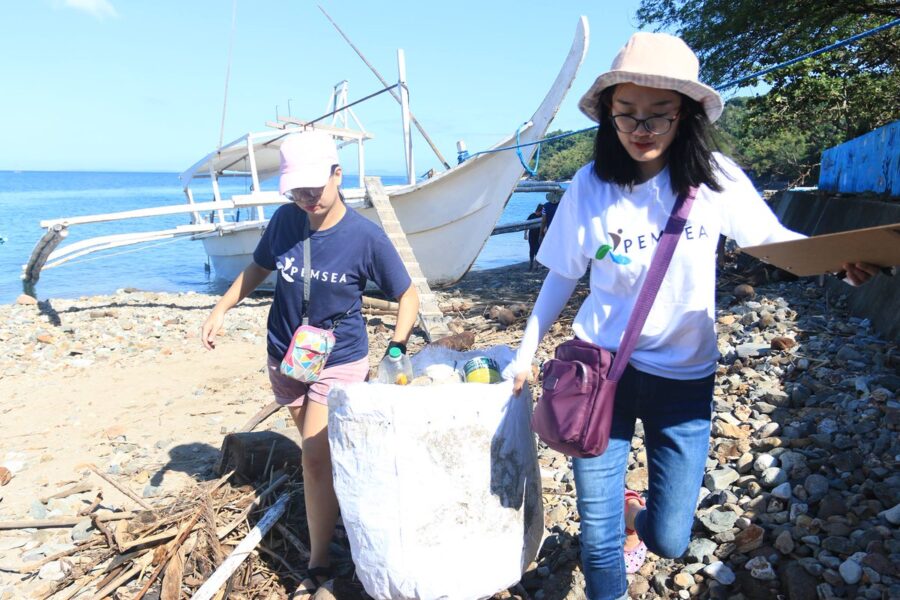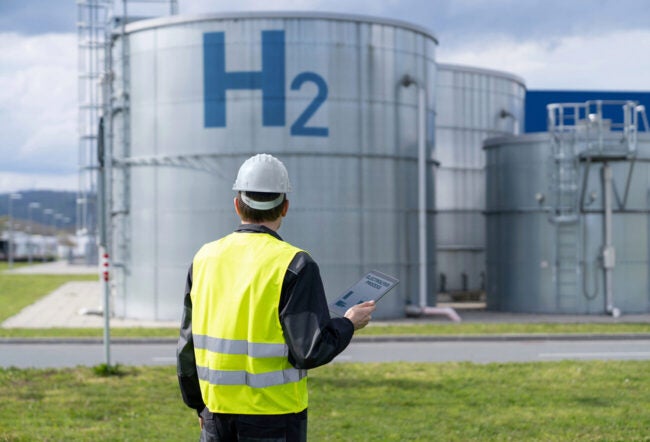The world’s oceans provide food security to 3 billion people who rely on fish as their primary source of protein. However, their livelihoods are under threat as 90% of the global fisheries are being fished at above their maximum sustainable levels. Asia will face the maximum adverse impact of that overfishing, as it accounts for 84% of all people employed in the fisheries and agriculture sector worldwide. Globally, the push for the so-called “blue economy” or sustainable use of oceans aims to protect economic activity worth $3 billion-$5 billion annually that coasts and oceans support.
There is help at hand from impact investors, who can sustain their investment commitments because they use strategies that earn them returns while achieving social impact. Two prominent impact investors in this space are the Partnerships and Environmental Management for the Seas of East Asia (PEMSEA), based in Quezon City, Philippines; and the Meloy Fund for Sustainable Community Fisheries of the nonprofit Rare group in Arlington, Va., which helps communities adopt sustainable behaviors towards their natural environment and resources.
Founded more than 40 years ago, Rare sees its role as promoting “behavior change,” where it helps local communities “adopt sustainable behaviors that enable them to benefit from the protection of nature,” said Dale Galvin, managing director of Rare and managing partner of Meloy Fund. Its chief tool is a methodology called the Pride Campaign, “which helps communities figure out what they feel pride in, in their backyard,” he added. “We look at that as an emotional hook for promoting behavior change.”
Galvin had spent half his career in top management roles in private sector banking and consulting, but a desire “to create value and stop more value-destroying activities” drew him to impact investing and Rare. “It was a way for me to connect my former business experience with the developing world,” he said.
At PEMSEA, the effort is “to foster and sustain healthy coasts and oceans across Southeast Asia through integrated management solutions and partnerships,” said Aimee Gonzales, its executive director. It works on driving policy development at the national level, and implementation of those policies at the local level. It emphasizes an “integrated coastal management” approach where it focuses not just on sustainable fish production, but also on sustainable ecosystem habitats.
Galvin and Gonzales shared insights about impact investing with Knowledge at Wharton for its podcast series “From Back Street to Wall Street.” The series is being produced in partnership with Impact Investment Exchange (IIX), a Singapore-based organization that serves as a bridge between investors and development goals in Asia. (Listen to this episode using the player at the top of this page. You can find links to the other episodes in the series here.)
Why a Dedicated Fund
At Rare, Galvin saw the need for dedicated vehicles like the Meloy Fund in his previous role as chief operating officer, where he led “Fish Forever,” a global coastal fisheries reform recovery program. In its attempts to scale that program, the organization realized that it needed to tap not just donors, but also private investors and governments. It worked on models around sustainable fisheries that showed positive returns for investors, in addition to protecting the livelihoods of the people that depend on those fisheries and poverty alleviation, he said.
“You can’t invest in a sector like oceans or fisheries and expect to make a real difference outside of the company you’re investing in, unless you’re connecting that to the management of the natural resource.” –Dale Galvin
The Meloy Fund invests in fishing and seafood-related enterprises, and focuses on Indonesia and the Philippines. The two countries account for 4.3 million small-scale fisheries, 21 million hectares of critical marine habitat, $4 billion in latent value in small-scale fisheries and 4 million tons of fish. “That is the most bio-diverse area in the world,” said Galvin. He noted that as part of the Coral Triangle, which includes the waters of Malaysia and Papua New Guinea, the area has about 25,000 islands and 400 million people, some of whom are the poorest in the world. “It is the most important place to work, if you care about coral reefs and mangroves and coastal fishing.”
In order to scale its operations, the Meloy Fund has begun collaborating more and more with governments, in addition to communities, urging them to adopt sustainable ways of managing their natural resources. Within that, coastal fishing is a critical area of focus, “because it is the intersection of food, climate, biodiversity and natural resources,” Galvin said. “It has been an undermanaged, under-appreciated part of the environment for a long time.”
Justifying the Investments
Rare aims to develop solutions to advance sustainable fisheries that are replicable globally. Galvin said Rare shapes its work by asking itself questions like: How do we help coastal fisheries recover? How do we create the right management approach, and then replicate that on a national and then a global scale?
Galvin said Rare explored some critical questions before it could justify the need for the Meloy Fund, such as: Will companies, businesses and other organizations in that supply chain respond to opportunities to source local, sustainable seafood? Will they see the business necessity of that? In addition, will fishers, on the other hand, respond to the opportunities to change behaviors in response to economic and social incentives?
“When we figured out that the answers to those questions were ‘yes,’ we knew that we should launch a fund to begin to demonstrate that effect,” said Galvin.
At last count, the Meloy Fund had raised $22 million from various investors to support its work in protecting coastal marine fisheries, the latest of which is the Dutch development bank FMO. Its budget for next year is $30 million. Galvin explained what made it possible for the fund to attract those investors: “You can’t invest in a sector like oceans or fisheries and expect to make a real difference outside of the company you’re investing in, unless you’re connecting that to the management of the natural resource.”
The fund plans to use those monies to make 10 to 15 investments of between $1 million and $2 million each, in businesses across the fishing industry, including fish processors, retailers and others in the supply chain. It attempts to stretch the impact of its investments through blended financing, which is a mix of donor funds and private capital.
In measuring the impact of its investments, the Meloy Fund has access to data generated by Rare’s coastal fishery recovery program, said Galvin. That data tracks how communities are doing in terms of income stability, climate resilience, and other aspects like fish biomass and reef health, he added.
Investing in ‘Behavior Change’
Galvin explained that to entice businesses to change the ways in which they source their fish, the communities involved agree to their behaviors, and the government is actively involved in managing the fisheries. The fund achieves those objectives by collaborating with NGOs and governments in managing the supply chains in fisheries. “We catalyze the government to do its part, and NGOs to do their part.”
“We look at that as an emotional hook for promoting behavior change.” –Dale Galvin
The “behavior change” that Rare pushes for is critical to get all actors on board, Galvin said.
“If I’m a fisher and I decide, ‘well, I want to change my behavior. I want to catch only the right-sized fish with the right gear in the right places — that doesn’t necessarily change my destiny if everybody else in my community doesn’t do that. If everybody comes in and catches the same thing – whatever they want, as fast as they can – then I don’t benefit at all. Therefore, the behaviors have to be social norms. Those behaviors might be agreeing to where they fish, agreeing to how they fish, agreeing to how they manage and count fish, and how much they can fish every year – and who can fish and who can’t.”
Help with Transition
The transition to that ideal world is not easy, and necessarily involves a phase where the impacted fishers need to have alternative livelihoods. “Often in the short-term, you’re going to have this dip – we call it the J-curve,” he said. The solution to tide over that transitory phase captures the essence of the work done by the Meloy Fund, he added. “[It is about] creating more value per catch – higher premiums, lower costs, reducing waste, improving the coal chain and so on. Through interactions with business, we can help those fishers receive more money per hour or per kilo of fish. That helps them make that transition.” Many fishers also pursue alternative livelihoods, such as in food processing or aquaculture, he added.
“Those in the traditional fishing sector are now beginning to understand that if they don’t start to transition, they’re going to be out of luck,” he said. “Many times they need capital to help them make that transition, to build new facilities, and working capital to begin to explore new markets – that’s our pipeline.”
Galvin hoped Rare’s work would help attract “hundreds of millions of dollars and more countries” to its cause, and ultimately bring about the change envisaged under the World Bank’s Sustainable Development Goals (SDGs). In many ways, the SDGs are interconnected, he said. “You can’t fix life below water without working towards zero hunger, no poverty and gender equality,” he added. “And because of that, you have the opportunity for lots and lots of capital to flow in to fix these problems. Millennials are going to ensure that their money is invested in companies that do the right things. So the momentum is in the right place.”
Charting the Blue Economy’s Course
At PEMSEA, the broad backdrop for its work is the so-called “blue economy,” the catchphrase to represent the environmentally and socially sustainable use of marine resources, while generating sustainable economic benefits and fostering inclusive growth. Its goals are not restricted to merely fish catch, or in increasing volumes of fish caught. It extends to the whole realm of marine planning, including eco-tourism, ecosystem management and restoration, and the shipping and maritime industries.
“One main thing that would help is empowering the small scale fisheries and giving them a voice at the table.” –Aimee Gonzales
PEMSEA helps fisher folk organize themselves through co-managing schemes. It earmarks protected areas where they are encouraged to become “stewards” of their own patch of fishing coastal communities and coastal lands. About 90% of fishers in Asia, for example, are small-scale fishers, and half of them are women, Gonzales said. Part of PEMSEA’s work is in helping them organize themselves and making them aware of their rights, she added.
“One main thing that would help is empowering the small scale fisheries and giving them a voice at the table,” said Gonzales. “More often than not, their concerns are lumped with the concerns of the large fishing fleets.”
A PEMSEA project in China on pollution reduction and waste management along the Xiamen waterfront has become “a model for ecological and economic success,” PEMSEA claims on its website. The project has provided increased access to the beach and seas for leisure and tourism, cleaner lakes and bays for residents, a venue for industries and a home for rich biodiversity, it states. In addition, the investment has generated a net benefit of RMB 64 million ($10 million) annually for the community.
In another project in Danang, Vietnam, it helped the community strengthen its resilience to increasing impacts from floods, typhoons and coastal erosion. Its integrated coastal management approach included boosting natural buffers against storm surges, improved forecasting and early warning and recovery systems, and the construction of shelters and houses to withstand typhoon damage.
Funding Challenges
PEMSEA helps provide micro financing to help fishers supplement their livelihoods and income. In projects where it wants to achieve higher scale, it uses blended financing and public-private partnerships, Gonzales said.
Coastal conservation projects could have large capital requirements that are beyond the reach of individual funds, and they necessarily have to tap governments and institutional investors. “This is the challenge that PEMSEA is tackling at the moment,” said Gonzales. PEMSEA is putting together an ocean investment financing facility to support “high-quality investable deals,” she added. It calls for actions on several fronts, such as project sourcing, project development, and alignment of private capital with government and owner-funding initiatives.
To be sure, PEMSEA faces challenges in attracting investors to its social impact initiatives. Some of them are around the rights of small-scale fishers to pursue sustainable use of fish resources, and in determining science-based sustainable harvesting levels that can justify investments, Gonzales said. “These are some of the pre-conditions for investors to come and invest in these fisheries projects.”



